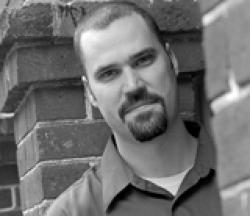In 1507, exactly five hundred years ago, German cartographer Martin Waldseemüller created two maps and his accompanying, Cosmographiae introductio. As a mapmaker, Waldseemüller enjoyed middling success, and today he would likely be forgotten altogether if not for one thing. On his charts, he gave to the unknown lands recently discovered in the western hemisphere a new name derived from that of explorer Amerigo Vespucci. “I do not see why any one may justly forbid it to be named Amerige; that is, Americ’s Land, after Americus, the discoverer, who is a man of sagacious mind; or call it America.” On his gores map, meant to be cut out and assembled into a globe, Waldseemüller marked the sliver of known coastline with this new name—and it stuck.
What followed is well known: the early sixteenth century initiated a long, sad history of incredible bloodshed that came to define and devastate the renamed continent. The recent discovery in Lima of an Inca skull pierced by a Spanish musket ball underscores the legacy of Francisco Pizarro and the conquest of Peru—the violent intermingling of indigenous cultures and the conquistadors of Western Europe’s colonial powers—that haunts the continent to this day. In the paired collages of Ana de Orbegoso and poems of Odi Gonzales in this issue, the voices of contemporary Incas speak back to the colonial invaders. In Toño Angulo Daneri’s essay about the “albino town” of Aicuña, Argentina, the solution to the riddle of one town’s genetic peculiarity is contained in bygone laws of Spanish land inheritance.
This issue, however, does not seek to explicate the first half millennium of the continent’s modern existence, but rather to assess its place now and look toward the future. The essays cover a broad spectrum of topics—from the scrap cardboard collectors of Buenos Aires to the drug wars and political corruption of Colombia, from the soy farms of the Brazilian Amazon to the riot-seized streets of Caracas, from the boys of Suriname who dream of becoming European soccer stars to the transsexuals of Lima who dream of life on the streets of Paris. In selecting work for this issue, we chose the pieces that compelled our interest and rewarded our repeated readings; in the process, we’ve tried to gather the multiplicity of experiences and voices and histories that comprise this part of the world. Not a complete picture, of course—such a thing couldn’t be assembled, not in three hundred, or three thousand pages—but the beginnings of one. We wanted to challenge anachronistic, outdated notions about the continent, offer some insight into the complexity of its nations and peoples who live there.
What you’re holding in your hands is the product of the combined efforts of dozens of journalists, writers, poets, artists, photographers, and translators. The work was done in Lima, Charlottesville, Oakland, Barcelona, Santiago, Cali, Salamanca, Santa Cruz, Buenos Aires, Paramaribo, New York, and many places in between. There are more people to thank than we have space to name, but three groups deserve special mention. Through the efforts of the staff of the Peruvian magazine Etiqueta Negra, where Daniel is an associate editor, we were able to commission and collect outstanding new work—nonfiction, fiction, and poetry—composed in Spanish (and in one case in Quechua). Thanks to Words Without Borders, we were able to draw on a network of outstanding translators, who brought these works into carefully rendered English. With the assistance of the Pulitzer Center on Crisis Reporting, we sent writers from North America to report on additional topics we wanted to see covered. Even so, there are many more stories we wanted to include but couldn’t because of space. Many of these will be included in a special interactive feature on the VQR website.
After eighteen months of work, we are extraordinarily proud of this project and delighted finally to be able to share it with you. We hope that you will be as challenged and enthralled in reading this issue as we were in editing it.








